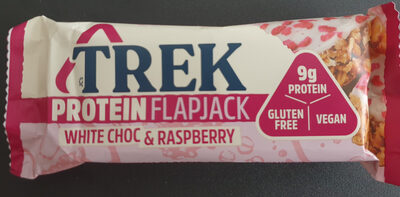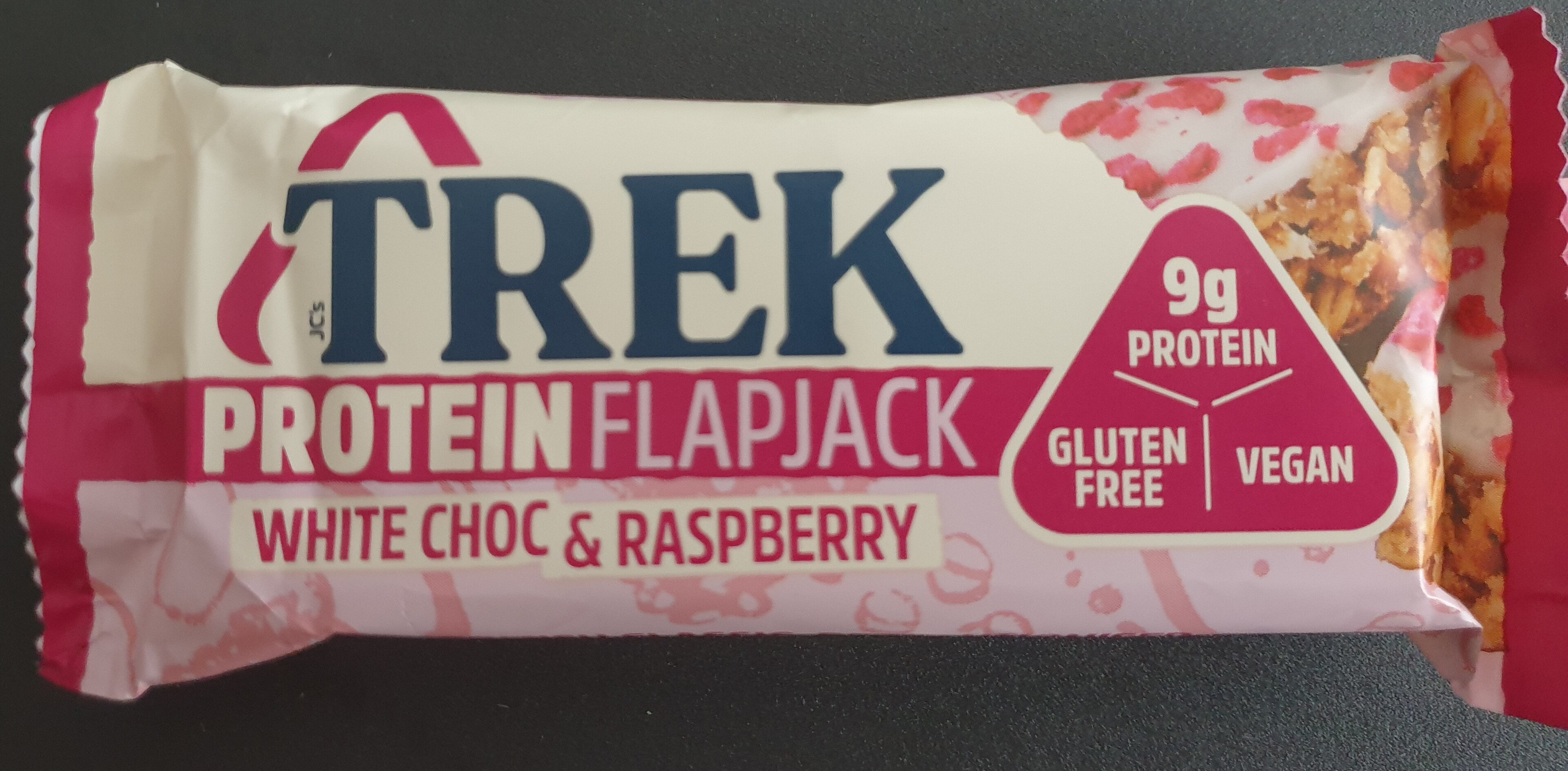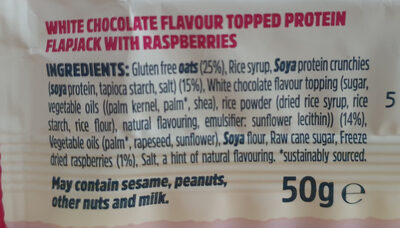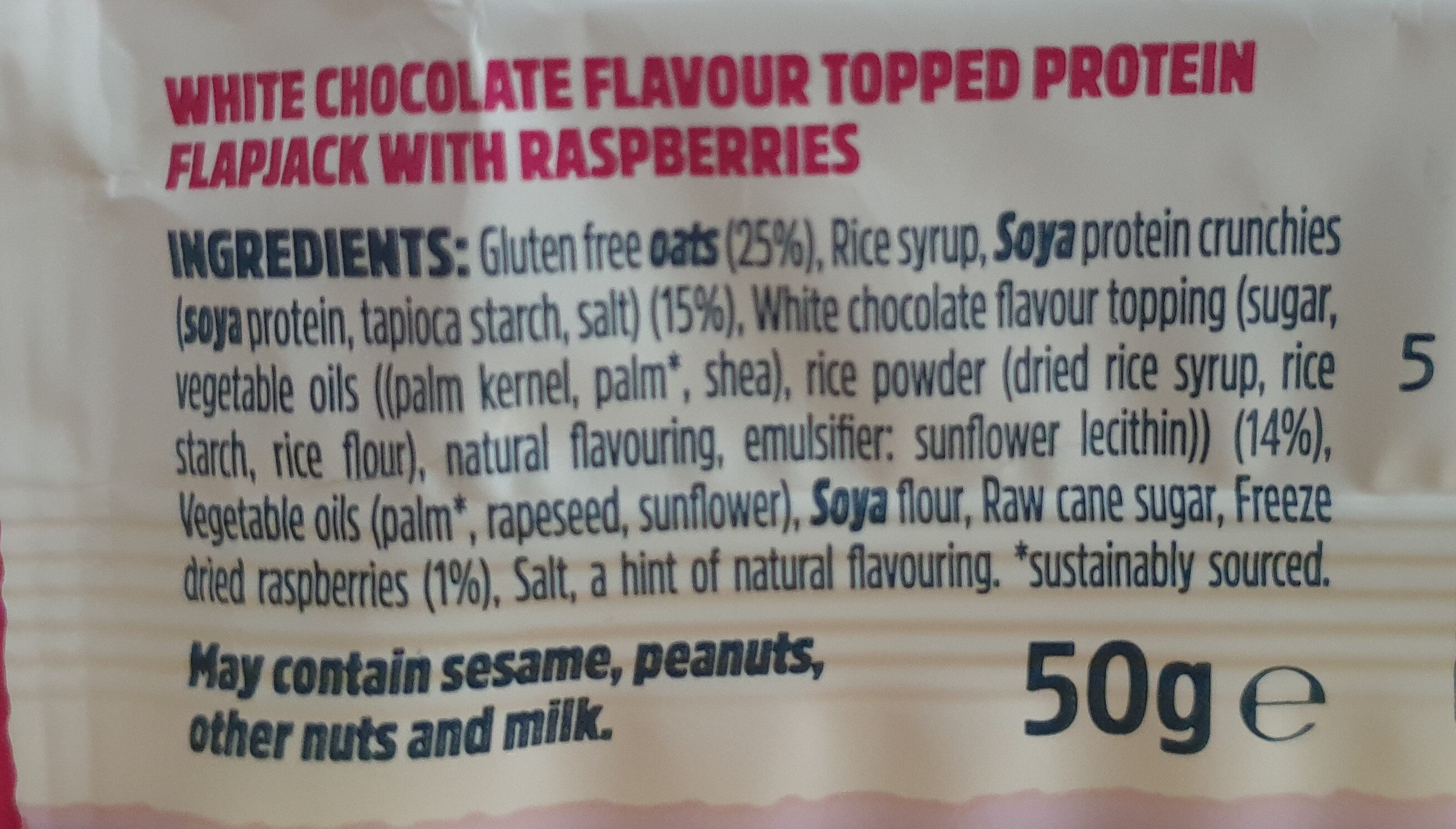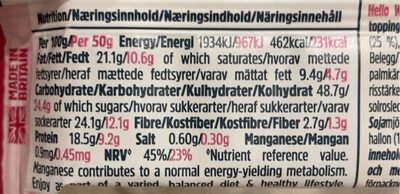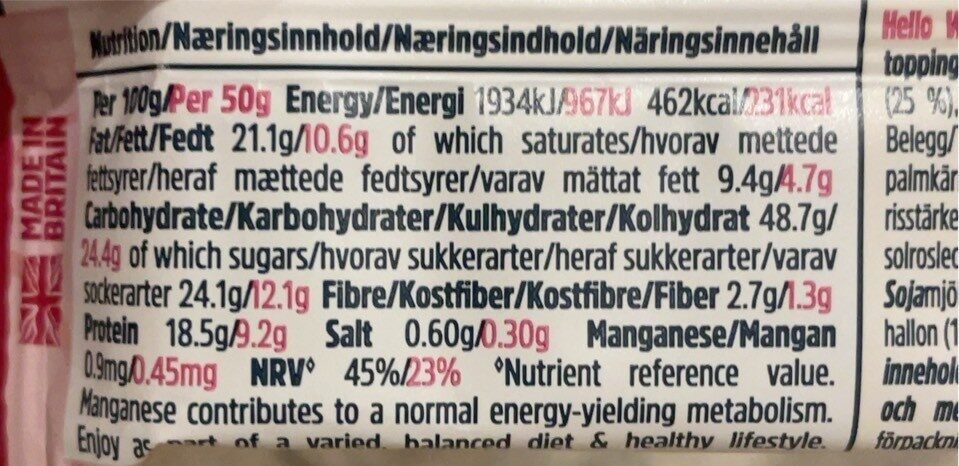White choc & raspberry protein flapjack - Trek - 50 g
This product page is not complete. You can help to complete it by editing it and adding more data from the photos we have, or by taking more photos using the app for Android or iPhone/iPad. Thank you!
×
Barcode: 5060088709276 (EAN / EAN-13)
Quantity: 50 g
Packaging: Plastic, Mixed plastic film-wrapper
Brands: Trek
Categories: Snacks, Sweet snacks, Bars, Cereal bars, Dietary supplements, Bodybuilding supplements, Protein bars
Labels, certifications, awards: No gluten, Vegetarian, Vegan
Manufacturing or processing places: United Kingdom
Link to the product page on the official site of the producer: https://eattrek.com/products/protein-fla...
Stores: Tesco
Countries where sold: Ireland, United Kingdom
Matching with your preferences
Environment
Packaging
Transportation
Threatened species
Report a problem
Data sources
Product added on by kiliweb
Last edit of product page on by swipe-studio.
Product page also edited by openfoodfacts-contributors, packbot, scrypt, yuka.sY2b0xO6T85zoF3NwEKvlmdCd_7wqGnvKSftiWzTwdbTHqe4X9Zex7WkH6s.
